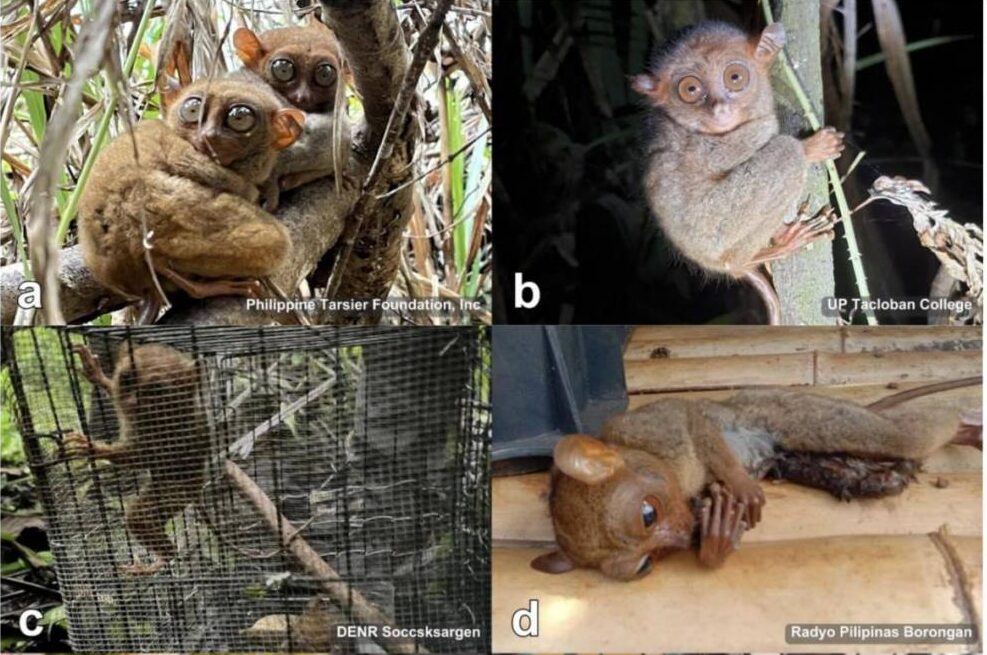Researchers see alarming FB ‘trend’ on tarsier sightings

Researchers from the University of the Philippines (UP) note in a new study that most sightings of the endangered Philippine tarsier (Carlito syrichta) have been occurring outside protected areas and key biodiversity zones.
This, they say, raises fresh concerns over increasing human-wildlife encounters that could place the elusive primate at greater risk.
How did they find out? Through Facebook.
The researchers analyzed more than 1,125 publicly available Facebook posts published between 2006 and 2024, and found that only 2.4 percent of tarsier encounters happened within designated protected areas, while just 3.68 percent occurred inside key biodiversity areas.
Significant use
The sightings spanned 29 provinces, more than double the 14 provinces listed in the species’ range description in the International Union for Conservation of Nature (IUCN) Red List.
“The information that social media platforms harbor could have significant use in efforts to protect other primate species as well, especially rare and cryptic species like tarsiers, and in efforts to empower citizen scientists and the general public to contribute to conservation,” the study said.
Value of social media
Led by researchers Maria Sabrina Tabeta and Simeon Gabriel Bejar of the UP Institute of Biology, the study underscores the value of social media as a tool for monitoring wildlife, especially for “cryptic” species like the tarsier that are harder to monitor.
Out of the 1,125 posts analyzed, 491 featured tarsiers in the context of ecotourism, mostly in well-known tourist sites in Bohol. Meanwhile, 74 posts documented wild sightings, including encounters in farms, forests and even classrooms.
While such habitats fall within the tarsier’s known range such as rural gardens and agricultural areas, “their presence in anthropogenic areas can be considered a reflection of the blurring gap between humans and wildlife, with some being close enough for direct contact or handling to occur,” the study said.
The study also found 19 posts showing tarsiers kept in confinement, inside cages, sacks, bags or tied with leashes. Several other posts depicted tarsiers dead or injured, often as a result of attacks by domestic cats.
“Such emerging threats to the Philippine tarsier may require targeted conservation efforts, adaptive management strategies and continued monitoring,” the authors said.
Near-threatened
The iconic tarsier, despite its cultural significance, is classified by the IUCN as near-threatened as the species faces habitat loss and illegal trade.
According to the New England Primate Conservancy, an international animal protection and wildlife conservation organization, tourism is also exerting stress on Philippine tarsiers and their fragile environment.
“Travelers are making trips to the Philippines specifically to see this iconic and unique species in the wild. While this has helped locals to view them in a positive light and as a priority for conservation, thanks largely to the tourism money they bring in, it may have overall negative consequences for the animals. They are captured specifically for tourist facilities, where the tarsier is displayed for viewing during the day—not ideal for a nocturnal animal.”
Mishandling
For the UP researchers, on-ground field studies must be conducted to better understand the extent and impact of human-tarsier interactions.
They also noted growing public concern for tarsier welfare, as reflected in Facebook users’ reactions to posts showing mishandling or harm of the animal.
“These expressions of concern suggest that Philippine tarsiers are valued and the importance of their well-being is recognized,” they said.
“While our observations to this end are preliminary, we recommend further study into this aspect of social media [as this] can be used to tailor online campaigns and similar conservation activities to specific demographics.”





















